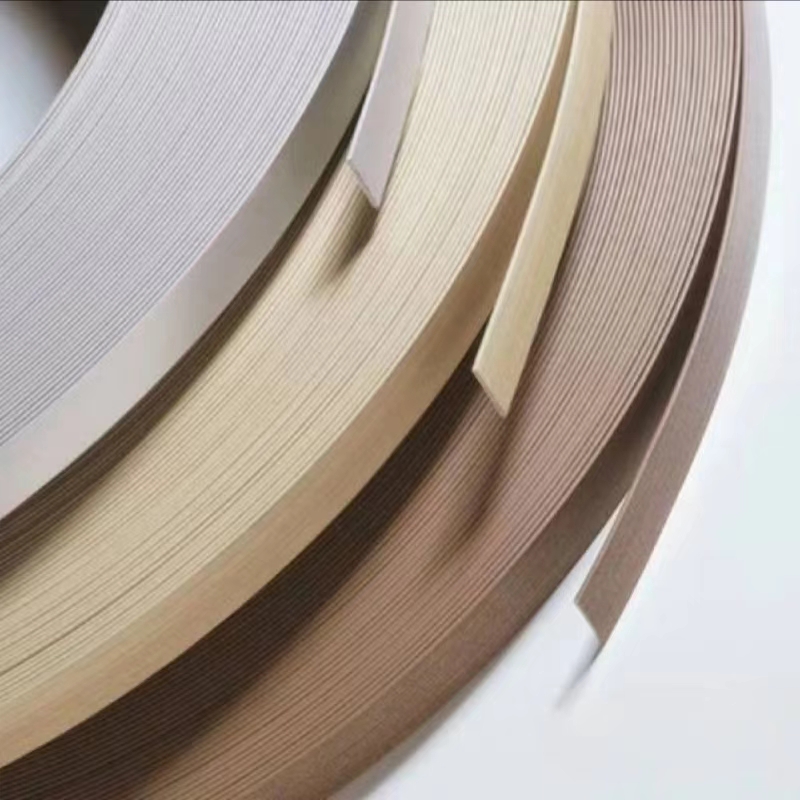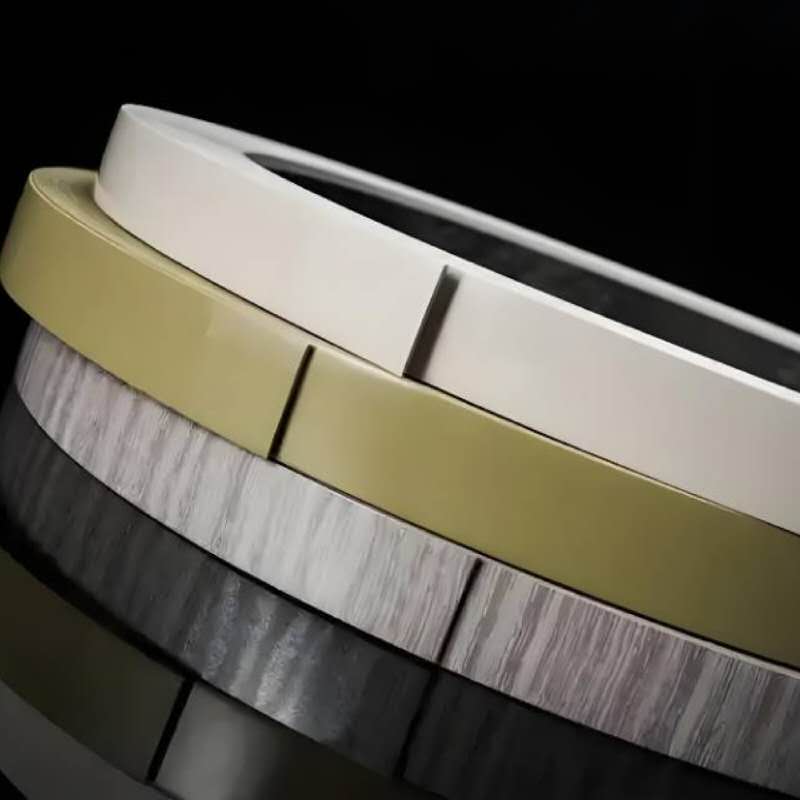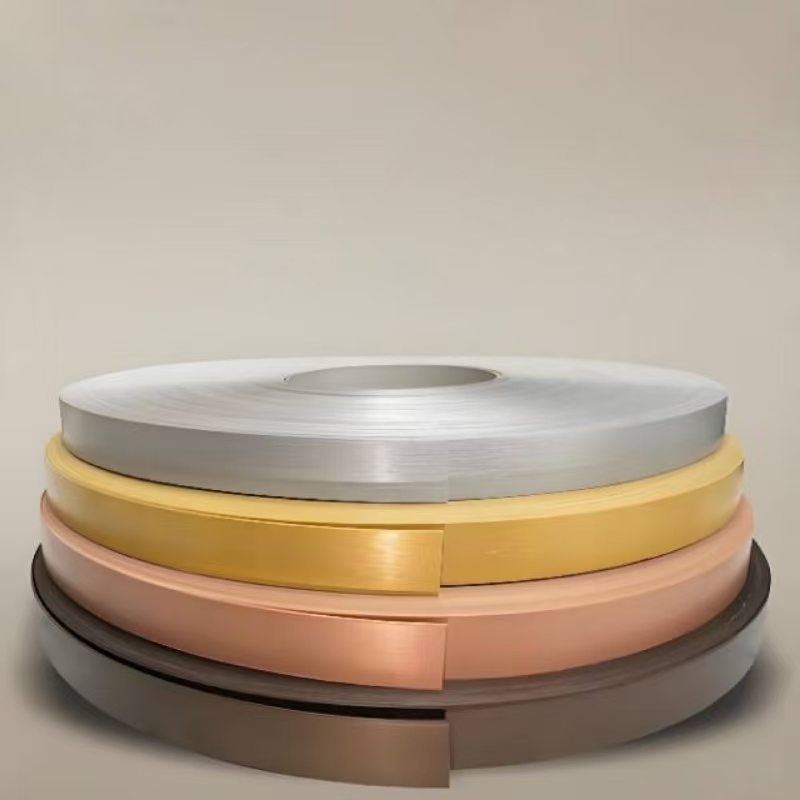In the furniture manufacturing and woodworking industries, edge banding is an indispensable material that is used to seal the edges of the board to improve the aesthetics, durability, and moisture and damage resistance of the furniture. Edge banding is made of a variety of materials, of which ABS (acrylonitrile-butadiene-styrene copolymer) and PVC (polyvinyl chloride) are the two most common choices. However, in the market, the price of ABS edge banding is often higher than PVC, which makes many furniture manufacturers and consumers wonder when choosing edge banding: Why is ABS edge banding more expensive? Should I choose ABS or PVC?
This article will focus on this issue and deeply analyze the characteristics, price differences and applicable scenarios of ABS and PVC edge banding to help readers make a wise choice.

ABS edge banding vs. PVC edge banding
ABS edge banding is a polymer material formed by copolymerization of three monomers: acrylonitrile (A), butadiene (B) and styrene (S). It has certain rigidity, toughness and excellent processing properties. ABS material has a smooth surface, is easy to color and print, and has strong impact resistance, heat resistance and chemical resistance. Its main features include:
● High impact resistance: ABS material has high impact strength, can maintain a certain toughness even at low temperatures, and is not prone to cracking or breaking.
● Excellent high temperature resistance: ABS edge banding can withstand a certain high temperature and will not soften under high temperature like PVC.
● Good surface processing: ABS edge banding surface can be finely painted and filmed to meet a variety of decorative needs, and the surface effect is more delicate.
● Excellent chemical resistance: ABS edge banding has good chemical corrosion resistance and can resist the erosion of a variety of chemical solvents.
PVC edge banding is made of polyvinyl chloride material, and its advantages are low cost and easy processing. PVC materials are widely used in daily life, especially in the furniture industry. PVC edge banding has become the first choice of many manufacturers because of its cheap and easy to handle characteristics. The characteristics of PVC edge banding include:
● Strong water resistance: PVC has strong waterproof performance and can effectively prevent water penetration.
● Good UV resistance: PVC edge banding is not easy to fade under certain sunlight, so it is suitable for indoor use.
● Good flexibility: PVC material is soft, can adapt to edges of different shapes, and has good bending and stretchability.
● Relatively low cost: Since PVC raw materials are relatively cheap and the production process is mature, the cost of PVC edge banding is relatively low, and it is a mainstream product in the mid-to-low-end market.

Why is ABS edge banding more expensive than PVC?
Although PVC edge banding is more common in the market and relatively cheap, the price of ABS edge banding is generally higher. The main reasons can be attributed to the following points: raw material cost difference, processing technology complexity, performance difference, market positioning and demand.
Raw material cost difference
The raw material cost of ABS is relatively high. ABS material is synthesized from multiple chemical substances such as acrylonitrile, butadiene and styrene, and requires a complex production process. The production cost of these raw materials is high, so the raw material cost of ABS edge banding is also expensive. In contrast, the production process of PVC raw materials is relatively simple, the cost is low, and the supply is large worldwide, so the price of PVC edge banding is cheap.
Complexity of processing technology
The processing technology of ABS edge banding is relatively complex. ABS has higher processing requirements, and precise equipment and high technology are required in the production process to ensure that the surface of the edge banding is smooth and the size is accurate. The surface of ABS edge banding can be treated with a variety of decorative treatments, such as spraying, laminating, thermal transfer, etc., to meet different design requirements, which also increases the labor and equipment costs in the production process. The processing of PVC edge banding is relatively simple, and common treatment methods such as hot pressing, coloring, laminating, etc. are relatively easy to complete, so the production cost is low.
Performance difference
ABS edge banding is generally better than PVC edge banding in performance, especially in terms of high temperature resistance, impact resistance and chemical resistance. ABS material has better strength and durability, and can maintain good performance even in high and low temperature environments, while PVC edge banding is easy to soften at high temperatures and is more brittle at low temperatures. Therefore, in order to ensure the quality and service life of the product, the cost of choosing ABS edge banding is relatively high, and the price is naturally more expensive.
Market Positioning and Demand
ABS edge banding is usually positioned in the high-end market, especially for occasions that require high quality and durability, such as high-end furniture, kitchen cabinets, high-end office furniture, etc. PVC edge banding is mainly used in the mid-to-low-end market and is suitable for customers with limited budgets. Due to different market demands, ABS edge banding is produced on a small scale and is more expensive, while PVC edge banding is produced on a large scale and is more affordable.

Should I choose ABS edge banding or PVC edge banding?
When choosing between ABS edge banding and PVC edge banding, the following factors should be considered: the budget of the project, the use environment of the product, the demand for appearance and durability, etc.
Budget
If the budget is limited, PVC edge banding is undoubtedly a cost-effective choice. The production cost of PVC edge banding is low, and its performance can already meet the needs of most mid-to-low-end furniture and decoration products. If you are on a tight budget, choosing PVC edge banding can not only control costs, but also ensure a certain quality and appearance.
However, if your project has high requirements for product durability and appearance quality, especially in the high-end market or occasions that require long-term use, choosing ABS edge banding may be more appropriate. Although the price is high, its excellent physical properties and surface processing effects can bring better user experience and longer service life.
Use environment
If the edge banding is mainly used in humid or high temperature environments (such as kitchens, bathrooms, etc.), ABS edge banding may be a better choice. ABS materials have stronger high temperature resistance and impact resistance, and can maintain stable performance in harsh environments. Although PVC edge banding has good waterproof performance, it is easy to soften in high temperature environments, which may lead to weak bonding or appearance deformation.
For general indoor environments (such as bedrooms, living rooms, etc.), PVC edge banding can already meet most of the needs, especially when there is no special high temperature resistance requirement, PVC edge banding is more cost-effective.
Appearance and durability
If you have high requirements for the appearance and durability of edge banding, especially in furniture or decorations with exquisite design and delicate appearance, ABS edge banding is undoubtedly a better choice. ABS materials have good surface finish, can be processed more carefully, and present a more delicate visual effect. Whether it is surface treatment or color matching, ABS edge banding can provide higher quality decorative effects.
Production efficiency
PVC edge banding has high production efficiency and requires simpler equipment and processes during production, so it is suitable for mass production. If the project requires fast delivery of large quantities of products, PVC edge banding may be more suitable. In contrast, ABS edge banding has a longer production cycle and higher process requirements, so it is suitable for high-end customized products.

ABS Vs. PVC: How to make the final decision?
| Selection criteria | ABS edge banding | PVC edge banding |
| Price | Expensive | Affordable |
| Durability | Impact-resistant, not easy to crack, good water resistance | Relatively brittle, greatly affected by temperature |
| Environmental protection | No chlorine, more environmentally friendly | Contains chlorine, may release harmful substances |
| Applicable scenarios | High-end furniture, humid environments, products with high environmental requirements | Ordinary furniture, economical projects |
| Appearance and texture | Uniform color, texture close to natural materials | Can be customized in a variety of colors and textures, but the texture is slightly inferior |
| Production efficiency | Higher production efficiency | Low production efficiency |
Dongguan Tingjie – Your Trusted Edge Banding Manufacturer
Dongguan Tingjie Decoration Materials Co., Ltd. is your trusted edge banding supplier, offering a wide range of PVC, ABS, and wood grain edge banding products. With years of experience, our factory in Dongguan, China, produces high-quality materials available in T-type and U-type profiles. We offer low prices, bulk order discounts, and customized edge banding solutions for clients worldwide. Get in touch with us today for quotes and special promotions on large orders.




